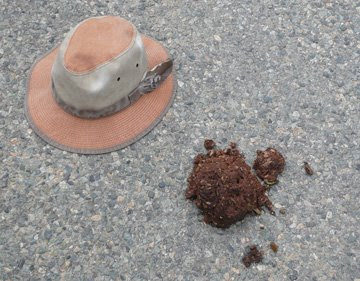Bears have some fascinating physiological traits, several of which are manifested during their winter denning period. These include: delayed implantation of the embryo for 3-4 months following the summer breeding season, and maintenance of energy and water balance during the 3-5 month denning period.
Energy and Water Balance During Winter Denning
During winter denning, which varies in length from 3-5 months, black and grizzly bears derive all of their sustenance from their own bodies. During this denning period they do not eat, drink, urinate, defecate or exercise.
Bears break down fat tissue to create water and up to 4,000 calories per day. They break down muscle and organ tissues to create protein.
Even though bears drink no water during denning, they do not become dehydrated. In a study published in the American Journal of Physiology, researchers at the Mayo Clinic found that bears were in “almost perfect water balance” after 100 days of hibernation. The metabolism of bears is of interest to researchers because a greater understanding may yield information that helps people suffering from chronic kidney failure and other health issues.
Another unique strategy is that bears are able to take urea – a primary component of urine – and use it to build new protein. Consequently bears are able use newly created protein to restore muscle and organ tissue even when they are not eating and are losing weight, something that humans most definitely cannot do!
Delayed Embryo Implantation as an Advantageous Evolutionary Feature
Delayed implantation, or embryonic diapause, is a reproductive strategy used by nearly 100 mammals including: armadillos, bats, bears, otters and badgers, seals, walrus and kangaroos. Delayed implantation results in the embryo not immediately implanting itself in the uterus following fertilization, and instead being maintained in a state of dormancy for a period of time. As a result, the normal gestation period is extended, sometimes for many months. Because delayed implantation is found in diverse species of mammals, it is likely the result of separate evolutionary processes in response to different selective pressures.
In the case of bears, it allows the female to time the delivery of cubs so that they are born during favorable environmental conditions – so that they do not arrive too early nor too late. It also protects the mother if food is scarce, as the embryo will spontaneously abort if the mother goes into the den with inadequate food stores to carry out gestation and lactation.
Bear Haiku:
Tiny twin bear cubs
Birthed into winter’s darkness
Bellies full of milk
Brown bear sleeps soundly
Winter shifts to spring’s great thaw
And life starts anew
Nan Laney, GBOP field coordinator














